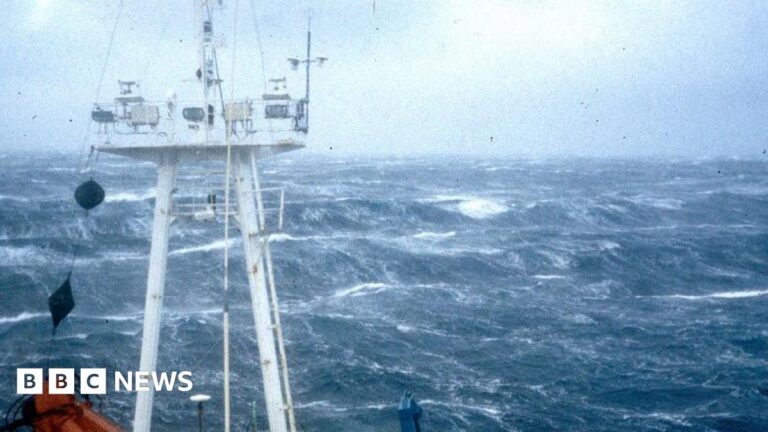Record-Breaking Atlantic Ocean Storm Remembered 25 Years On

As we reflect on the 25th anniversary of one of the most powerful storms in Atlantic history, memories of its ferocity and impact remain vivid. The hurricane that made its mark in 1998 not only showcased the destructive force of nature but also highlighted the changing dynamics of storm patterns due to climate change.
In October 1998, Hurricane George tore through the Caribbean and the Southeastern United States, leaving devastation in its wake. This storm was notable for its record-breaking wind speeds, which peaked at 150 miles per hour, making it one of the most powerful storms to stride across the Atlantic. Over its lifecycle, George was responsible for at least 600 fatalities and caused an estimated $10.1 billion in damages—figures that alert us to the brutal reality of such natural disasters.

Initially forming as a tropical depression off the coast of Africa, Hurricane George rapidly intensified, becoming a Category 4 hurricane while traversing the warm waters of the Caribbean. The storm made landfall in the Florida Keys before continuing its path along the Gulf Coast. Its enormous size meant that not only the areas directly hit suffered, but its torrential rains also extended hundreds of miles inland. Flooding was rampant, with some areas receiving over 20 inches of rainfall within a few days.
The year 1998 was marked by other climatic anomalies, suggesting that George was not an isolated event. Satellite data revealed that the Atlantic hurricane season recorded 14 named storms, with six reaching hurricane status. This surge in storm activity raised questions about climate trends, potentially indicating a broader pattern that could have deeper implications as we move forward.

The impact of Hurricane George brought attention to emergency preparedness and response strategies. In regions frequently affected by hurricanes, the storm served as a critical lesson. The National Hurricane Center intensified its focus on improving forecasting techniques and public safety warnings in the years following George. Their commitment to enhance coordination with local authorities has since saved countless lives during subsequent storms.
During the storm’s aftermath, communities worked tirelessly to restore their infrastructures. In total, over a million residents were evacuated across multiple states, showcasing not only the power of the storm but also the collaboration between state agencies. In the years since, updates in building codes and disaster response strategies have set a new standard for preparedness.
As we commemorate 25 years since Hurricane George, it is vital to recognize the long-lasting effects of such storms on the environment. Coastal erosion, habitat destruction, and changes in shoreline landscapes are some of the legacies left behind. Experts warn that climate change influenced by rising sea temperatures is likely to make hurricanes like George more frequent and intense.

Today’s world faces significant challenges under the threat of increasingly severe weather events. According to a study published in the Journal of Climate, the frequency of Category 4 and 5 hurricanes has increased by nearly 50% since the late 1970s. We could soon find ourselves in a climate where storms like George become a norm rather than an exception.
To mitigate the anticipated impacts, researchers and climate scientists are working with various stakeholders to devise measures that not only protect communities but also restore natural habitats. A combination of policy changes, community awareness programs, and sustainable practices can help reduce vulnerability to future storms.
The legacy of Hurricane George serves as a sobering reminder of nature’s uncontrollable power and the urgency for continued improvement in resilience and adaptation strategies. As we look forward, the lessons learned from this catastrophic event will play an instrumental role in shaping our approach to dealing with an uncertain future.

In conclusion, as we remember the record-breaking storm that left an indelible mark on history, it is essential to honor both the lives affected and the progress made in hurricane preparedness. With a collective effort, we aim to build stronger, more resilient communities capable of facing the stormy challenges ahead. The journey from Hurricane George to today’s proactive strategies is a testament to human resilience in the face of nature’s fierce wrath. Let us hope that the next 25 years bring advancements that spare future generations from similar trials in the Atlantic.


